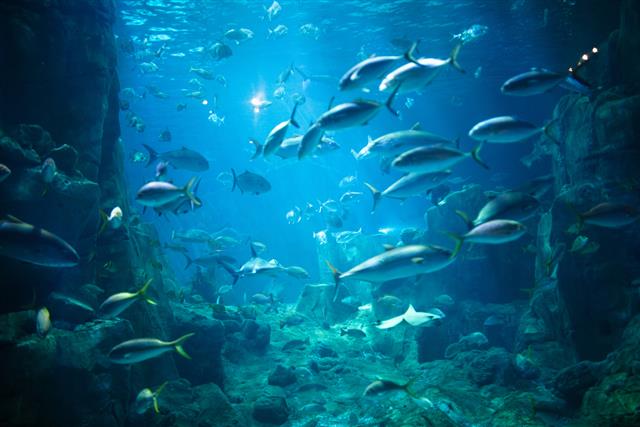
Tap to Read ➤
Thermal Pollution – Causes and Preventive Measures
Mukta Gaikwad


Discharge of warm water from industries into natural water bodies causes thermal pollution. This not only hampers the aquatic life, but also degenerates the quality of water.




Thermal pollution is defined as 'degradation of water quality by any process that changes ambient water temperature'. When the temperature of the natural water resources begins to vary due to external reasons such as inflow of industrial water, it brings about a change in water temperature.

This depletes the oxygen levels in the water and affects the ecosystem negatively. Rapid industrialization and wanton deforestation are the primary reasons for the rising levels of thermal pollution today.

Although many scientists and engineers delve deeper into these matters to make the world realize its greatest folly, only little is being done to rectify it. Like other types of pollutions, thermal pollution is spreading rapidly and affecting surrounding water bodies, which has led to a rise in water temperatures, killing the flora and fauna.

Causes
Influx of water containing industrial coolant, is the common cause of thermal pollution around the industrial areas. The machines used in such manufacturing units are heat engines, steam engines, turbines, internal combustion engines, and even our vehicle engines work on the basic principle of heating up to convert potential energy into kinetic energy.

As all these engines work on fossil fuels, which is why they get highly heated and take a lot of time to cool down. To accelerate the cooling process, coolants are used by power plants. Many times, water from nearby water bodies such as lakes and rivers is used to bring down the temperature.

In this process, the temperature of the water used for cooling rise up by 5 -10 degrees Celsius. The used water is then dumped into the same water body, which causes further pollution.

Also, when trees and vegetation are cut down, and when the shading vegetation is removed to satisfy demands of urbanization, it increases soil erosion, which eventually gets dumped in the water body.

Muddy water bodies absorb more sunlight, which leads to more heating. Additionally, water that runs off from the streets, parking lots and roofs, adds to the pollution in the naturally occurring water bodies.

Effects
Effects of thermal pollution are evidently seen as degeneration of aquatic life. When warm water is let out into natural water bodies, it tends to deplete the oxygen levels in the water. This adversely affects the aquatic animal and plant life, which disturbs the surrounding ecosystem.

Lack of oxygen causes anaerobic conditions in the deeper areas, resulting in the rise of bacteria colonies where there is abundant food supply. The metabolic rate of the underwater animal life increases due to thermal pollution. Thus, they eat more in a shorter time, resulting in reduction of resources.

The food chain gets disturbed as fish schools move out of the thermal discharge areas, which in turn affects the biodiversity in the given region. High water temperature also effects the reproductive cycles of the many aquatic species. As algae covers increase, it further reduces the oxygen level, which causes shorter lifespan of aquatic animals.

Preventive Measures
Thermal pollution can be controlled by taking a few serious measures. Water discharges from industries, factories or manufacturing units, are the majorly responsible for this pollution. If these industries maintain man-made water bodies such as cooling ponds, lakes and reservoirs, they can avoid discharging the water into natural water bodies.

The man-made water bodies cool down by evaporation, convection and radiation. Cooling towers which enable heat transfer into the atmosphere by evaporation is another excellent alternative. The other way of preventing this pollution is by congregation.

This is a process in which waste heat is recycled for reuse. To prevent thermal pollution caused by urban runoff, storm water facilities which help in increasing the groundwater levels can prove to be extremely beneficial.

Thermal pollution has to be controlled with immediate effect, as more and more water bodies are getting affected by the same. It not only disturbs the ecosystem in the water, but also wrecks the quality of the water and the area around it.